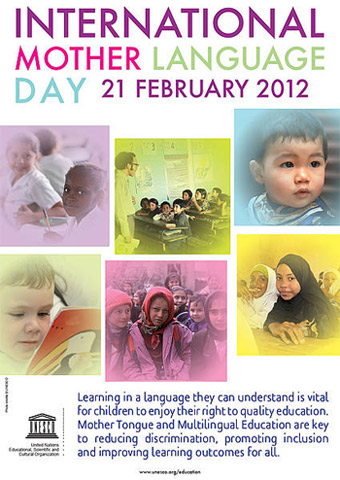
February 21 is International Mother Language Day. [Photo/ un.org]
International Mother Language Day is an observance held annually on 21 February to promote awareness of linguistic and cultural diversity and multilingualism. It was proclaimed by the General Conference of the United Nations Educational, Scientific and Cultural Organization (UNESCO) in November 1999. 2012 International Mother Language Day is themed Mother tongue instruction and inclusive education.
There are over 120 languages used in China, and Chinese government has done a lot of work in the protection of minority languages so that the culture it berried could be well maintained and past on by generations.
Since the peaceful liberation of Tibet over 60 years ago, the government has invested a lot of resources for the protection and development of Tibetan culture, of which the inheritance and protection of Tibetan language has made great achievement. For example, Tibetan Language and Literature of the University of Tibet, the Tibetan language and other relative majors became the first undergraduate program approved by the Ministry of Education; Tibetan language and literature teaching team has been selected as the first state-level teaching team; and Tibetan language and literature became the first national key discipline in Tibet.
![In the process of the modernization of its society, the Chinese government increases efforts to protect the Tibetan language. [Photo/ Xinhua]](./W020120223522952608902.jpg)
In the process of the modernization of its society, the Chinese government increases efforts to protect the Tibetan language. [Photo/ Xinhua]
The Tibetan language is the common language used in Tibet Autonomous Region as an important communication tool and information carrier of Tibetan people. It carries Tibetan history and civilization and serve as an important part of Chinese diverse cultural treasures. In the process of the modernization of its society, the Chinese government increases efforts to protect the Tibetan language.
To protect Tibetan language is to popularize the education. Before 1959, only three lords and a small number of monks and nuns could learn the Tibetan language, and the majority of working people have no right and freedom to learn it. In Lhasa, there were only a few private schools, and the illiteracy rate in Tibet was up to 95%. Since the Democratic Reform in Tibet in 1959, common people have got the opportunity to study, and the rate of people getting education has been expanding. At present, compulsory education has been fully implemented, enrollment rate of primary school-age children is over 98%, and that of secondary school is over 90%. The illiteracy rate of people from age 18 to 50 has declined from 95% to 5%.
